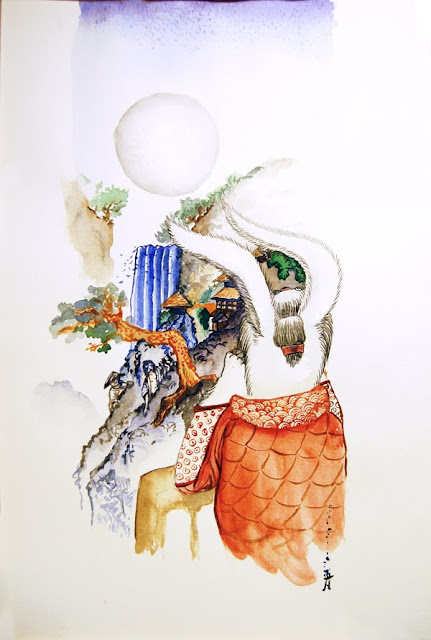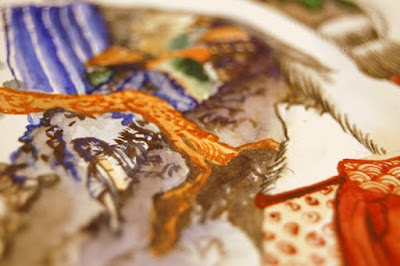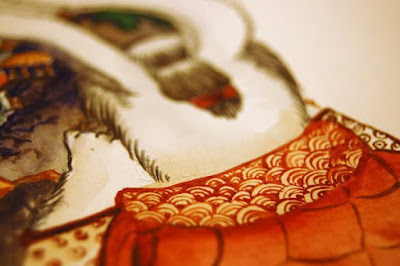Alexandra, Poet Hazori guarding his Segun
We have chosen Katsushika Hokusai as our model. He was a painter and a printer of the late Edo period and is most famous for his series 36 Views of Mount Fuji, like:
As you can see he used a very interesting technique called lithography for this picture, where for each painting a master (Hokusai) has first created a black and white sketch, which was later curved out of stone or hard wood, creating a picture matrix. After that matrix was brushed over with fresh colors and pressed to the paper, allowing to create multiple copies of the same picture. An enormous advantage of such approach is the volume of the painting and the better distribution of the paint on the paper.
Poet Hazori guarding his Segun
1. Concept
This is the first step toward a picture. We are surfing the net looking of pictures, text and music which can help us to understand the author we are trying to follow, we are trying to get under his skin, sometimes literally forgetting that we are sitting not in Japan of the 19th century.
Then we select a couple of paintings we define the model behavior typical for the authors. This time we have chosen Hokusai's "peasant paintings" as a starting point, like this one:
Women returning home at sunset
2. Sketching
After that Alexandra takes matters in her own hands, starting to work on the picture's subject, at this time actually a new painting is born with its own history, subject, matter and ideas. The idea is followed by a sketch:
3. Execution
Visual art is also about execution. A sketch rough and detail-less is getting a divine kiss of life from an artist as very often painter can only see his work full when it is done, almost like parents see their children when they grown up.
Original Hokusai picture is used to calibrate colors
Sketch is being projected to paper
And finally sketch drawing is filled with colors
and patterns
And a few hours later it is done:
Poet Hazori guarding his Segun











.jpg)
0 comments:
Post a Comment